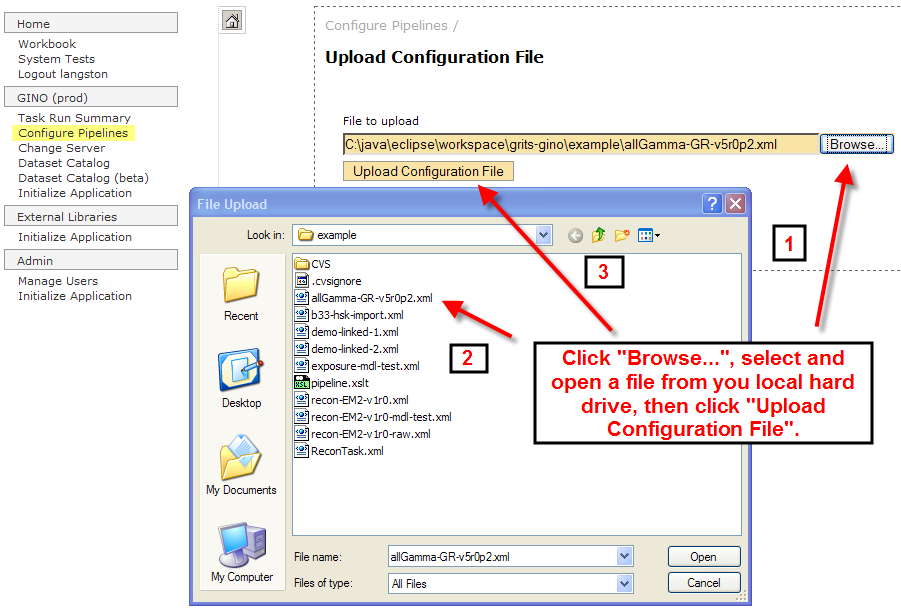...
You must be logged in to upload an XML configuration file. If you are not logged in, you will see "Login" in the left hand navbar. If you are already logged in, you will see "Logout" followed by your user name. You will only see the "Click here to upload a new configuration file" link on the "Configure a Pipeline" page if you are logged in. Click the link (indicated in the screenshot below), to be taken to the page that allows you to browse your local hard drive for a pipeline XML configuration file to upload.
Fromt here, follow these steps to upload your own pipeline XML configuration file:
- Click "Browse...". A file dialog box will open.
- Select your pipeline XML configuration file from your local hard drive. In the screenshot below, select the file in the file dialog box, then click "Open" which will fill the "File to upload" text box with the path to your pipeline XML configuraiton file.
- Click "Upload Configuration File"
How to Define a Pipeline
A GINO Pipeline is defined in an XML file whose format is described by a W3C XML Schema available at http://glast-ground.slac.stanford.edu/pipeline/pipeline.xsd. This schema will mainly be useful if you use an XML editor that supports W3C XML Schema, which these days includes nearly all modern XML editors. XML Spy is a good choice that we have experience with. However, most pipelines will be easy to configure with a simple text editor (emacs for example).
...

